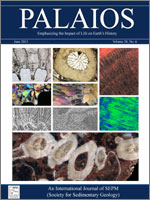Several methods have been developed to standardize frequencies of failed shell-crushing predation preserved as repair scars on the shells of mollusks to account for factors known to influence the accumulation of repairs. Our understanding of the potential biases inherent in repair frequency analyses, however, remains incomplete due to a lack of systematic comparison and evaluation of available methods. Here we examine the effects of three different types of data standardization—body size, shape, and exposure time to enemies—on the calculation of repair frequency for a hypothetical data set of 1,000 specimens of a marine gastropod species that varies across its geographic range in morphology and life history. We based assumptions for the ecological parameters (e.g., variation in growth rates and morphology) of our model system on literature reports of living marine gastropod species. We initially structured our unstandardized data set to show equivalent repair frequencies throughout the species' geographic range. Subsequent standardization of this data set by size, shape, and exposure time revealed a progressively stronger spatial pattern, with higher repair frequencies to the south. This finding suggests that the comparison of unstandardized data may be misleading. The continued use and development of standardization methods should both enhance our ability to detect ecologically meaningful signals, and facilitate unbiased tests of hypotheses concerned with the importance of shell-crushing predators in ecology and evolution.
BioOne.org will be down briefly for maintenance on 17 December 2024 between 18:00-22:00 Pacific Time US. We apologize for any inconvenience.
How to translate text using browser tools
1 July 2013
ON THE MEASUREMENT OF REPAIR FREQUENCY: HOW IMPORTANT IS DATA STANDARDIZATION?
GREGORY P. DIETL,
MARY E. KOSLOSKI
ACCESS THE FULL ARTICLE
It is not available for individual sale.
This article is only available to subscribers.
It is not available for individual sale.
It is not available for individual sale.

PALAIOS
Vol. 28 • No. 6
June 2013
Vol. 28 • No. 6
June 2013




